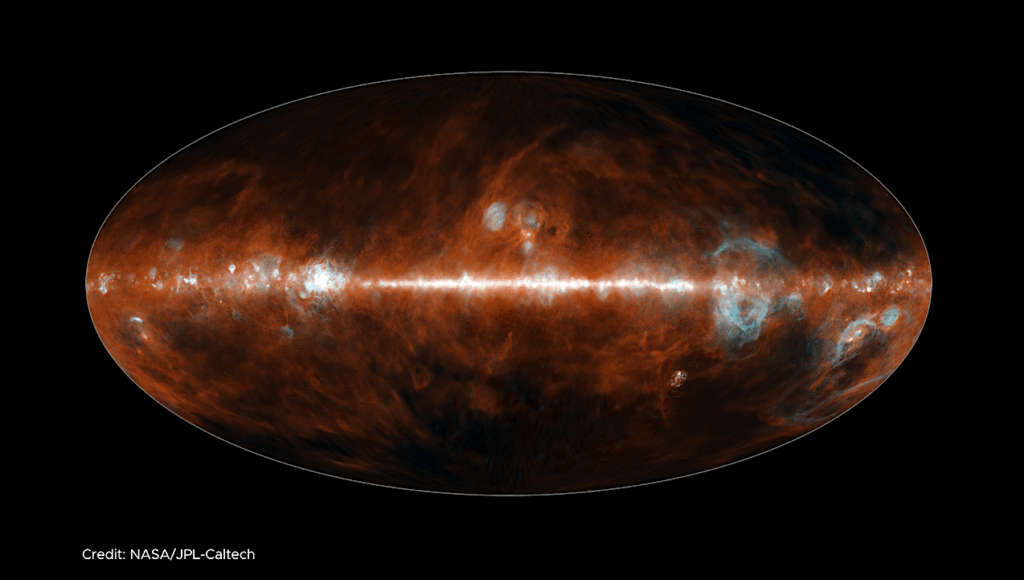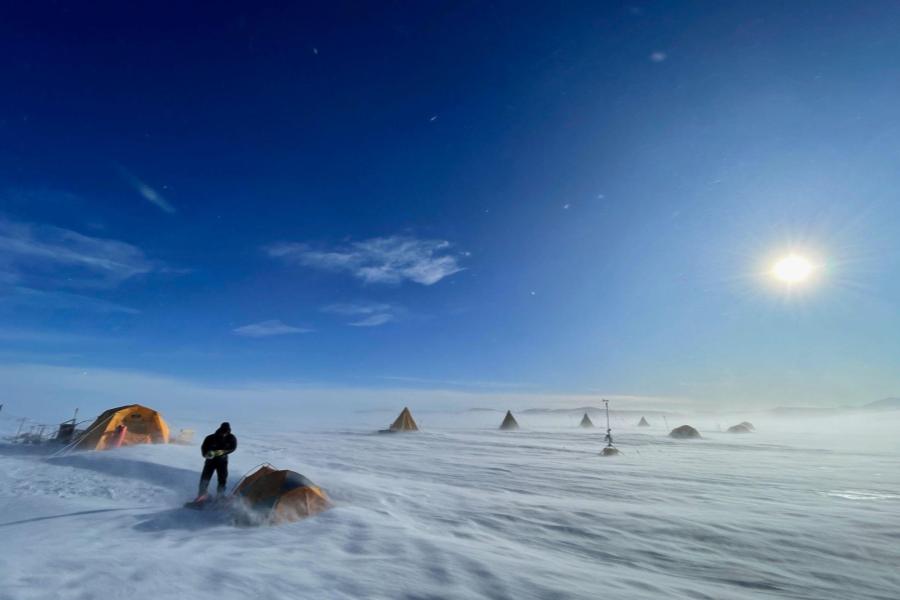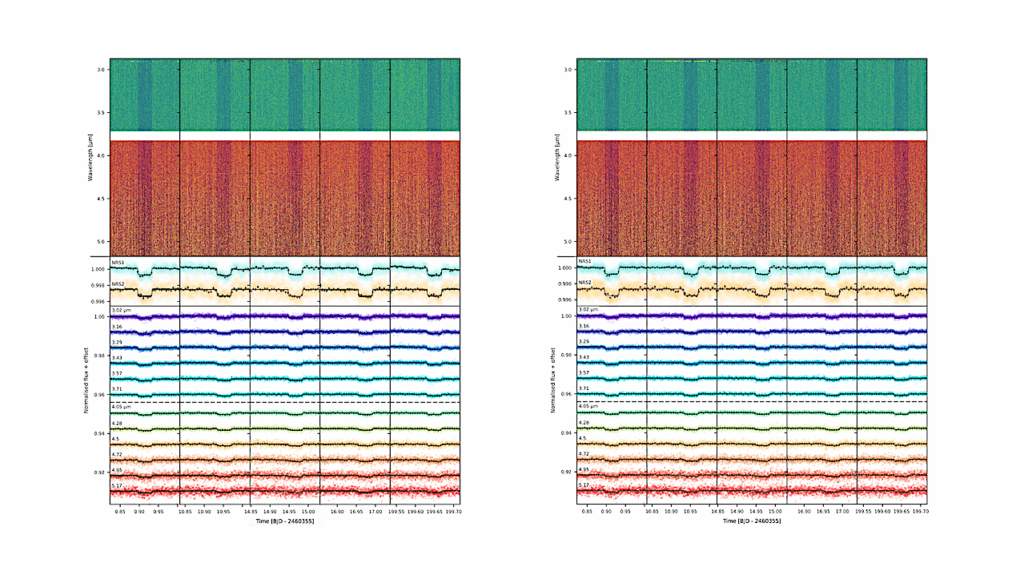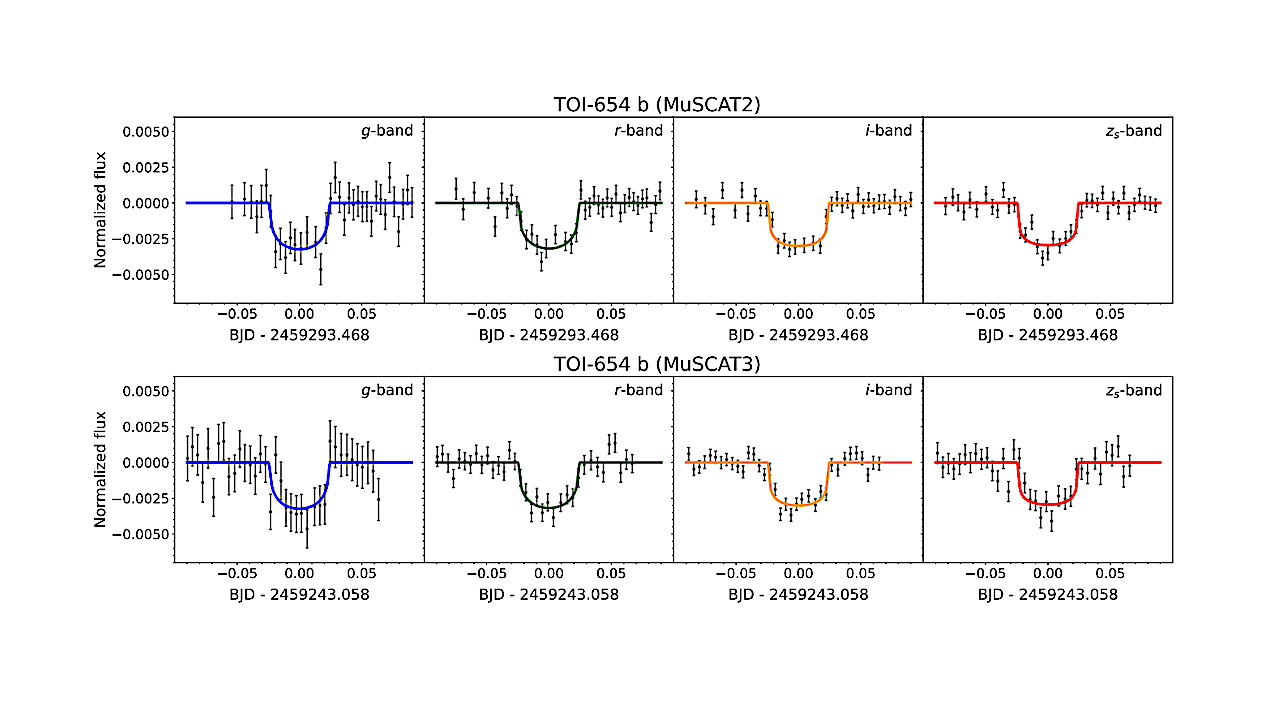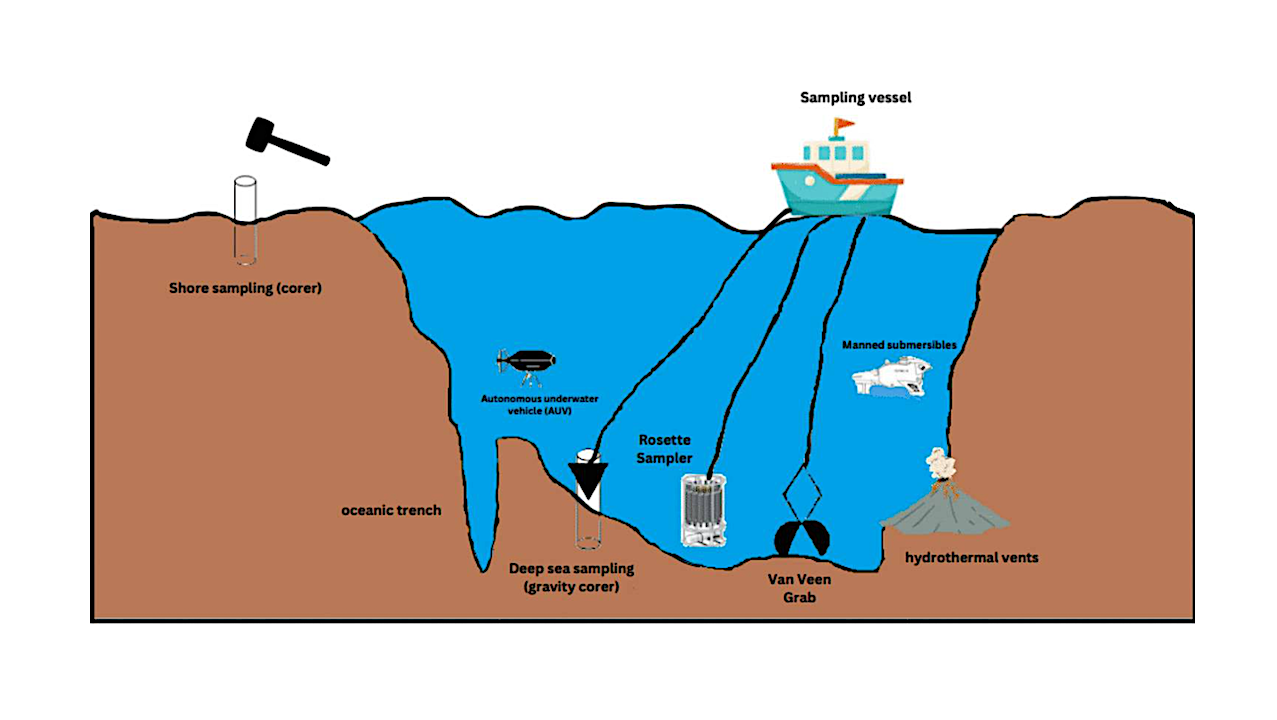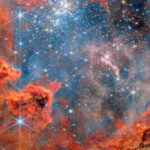Now Reading: Building Earth With Pebbles Made Of Chondritic Components
-
01
Building Earth With Pebbles Made Of Chondritic Components
Building Earth With Pebbles Made Of Chondritic Components
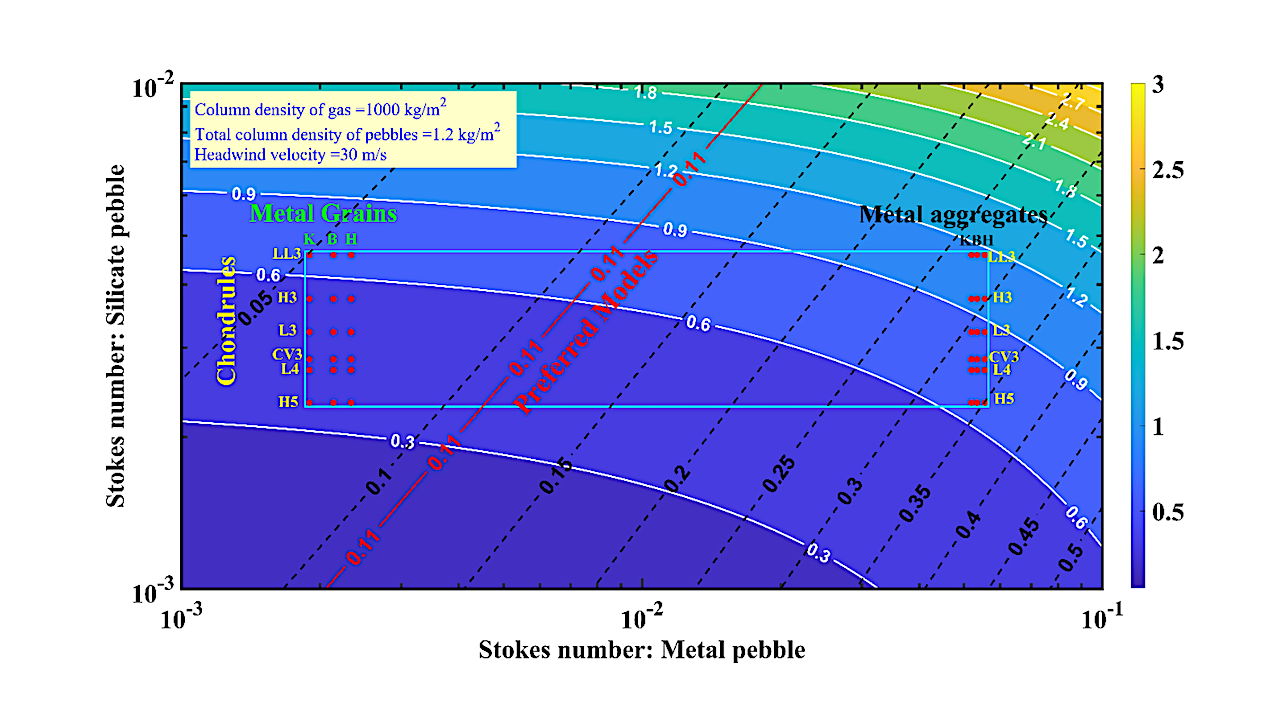
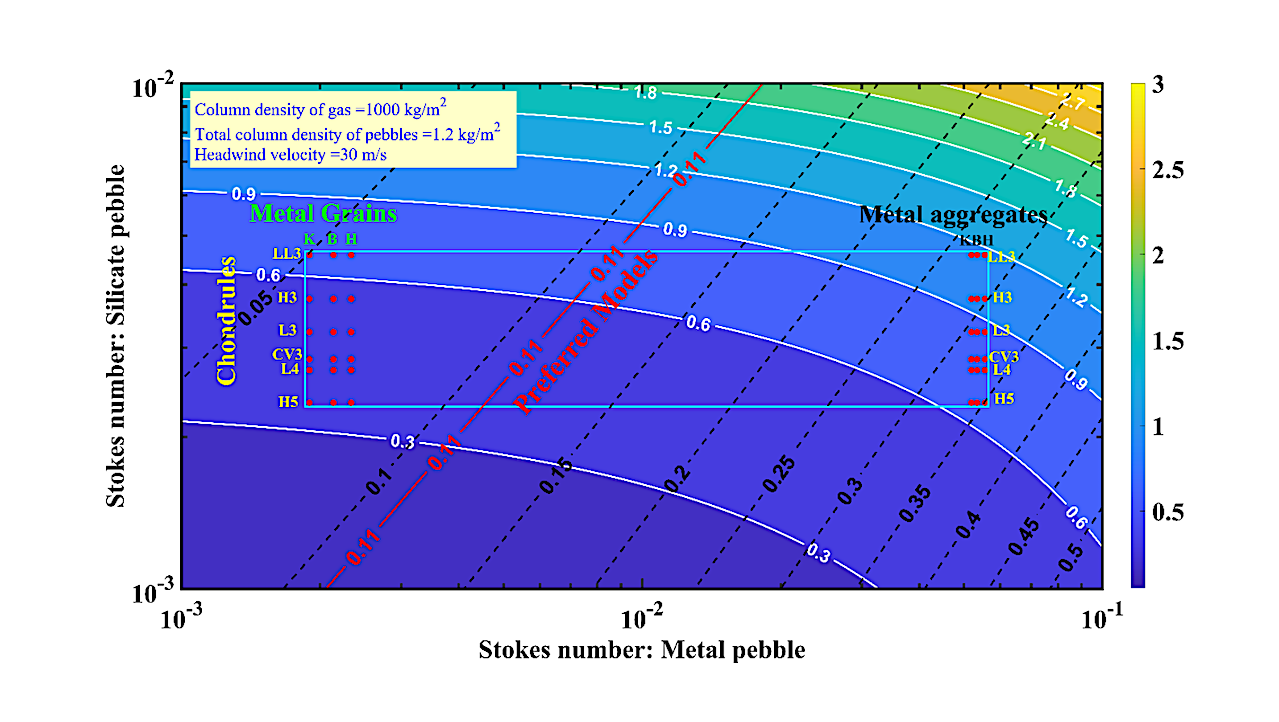
Final size of protoplanets after 2 My of Hill regime pebble accretion, for different Stokes numbers of silicate and metal pebbles. The plot shows protoplanet mass relative to Earth (white contours and shading) and protoplanet metal mass fraction (black contours) as functions of the Stokes numbers of metal and silicate pebbles. The red dots represent chondrule and metal grain Stokes numbers based on measured size and density in the Kelly (K), Bjurbole (B), and Hammond Down (H) chondrites, respectively. The turquoise box indicates the implied range of pebble Stokes numbers, including individual metal grains and metal grain aggregates. The red contour corresponds to an Earth-like (Fe+Ni)/Si mass ratio of 2.06 and defines our preferred models with protoplanetary masses between 0.35 and 0.7 Earth masses. — astro-ph.EP
Pebble accretion provides new insights into Earth’s building blocks and early protoplanetary disk conditions.
Here, we show that mixtures of chondritic components: metal grains, chondrules, calcium-aluminum-rich inclusions (CAIs), and amoeboid olivine aggregates (AOAs) match Earth’s major element composition (Fe, Ni, Si, Mg, Ca, Al, O) within uncertainties, whereas no combination of chondrites and iron meteorites does.
Our best fits also match the ϵ54Cr and ϵ50Ti values of Earth precisely, whereas the best fits for chondrites, or components with a high proportion of E chondrules, fail to match Earth. In contrast to some previous studies, our best-fitting component mixture is predominantly carbonaceous, rather than enstatite chondrules.
It also includes 15 wt% of early-formed refractory inclusions (CAIs + AOAs), which is similar to that found in some C chondrites (CO, CV, CK), but notably higher than NC chondrites. High abundances of refractory materials are lacking in NC chondrites, because they formed after the majority of refractory grains were either drawn into the Sun or incorporated into terrestrial protoplanets via pebble accretion.
We show that combinations of Stokes numbers of chondritic components build 0.35-0.7 Earth masses in 2 My in the Hill regime accretion, for a typical pebble column density of 1.2 kg/m2 at 1 au. However, a larger or smaller column density leads to super-Earth or moon-mass bodies, respectively. Our calculations also demonstrate that a few My of pebble accretion with these components yields a total protoplanet mass inside 1 au exceeding the combined masses of Earth, Moon, Venus, and Mercury.
Accordingly, we conclude that pebble accretion is a viable mechanism to build Earth and its major element composition from primitive chondritic components within the solar nebula lifetime.

Schematic of the secular variation of the early solar system materials. (a) 0-0.7 My: The refractory grains condense close to the Sun. Some refractory grains scattered to the outer solar system by turbulent diffusion are ultimately incorporated in later-formed bodies. Metal grains and the early generation of chondrules form further away from the Sun. Planetesimal formation takes place at this stage by gravitational or streaming instabilities (Johansen and Lambrechts, 2017). (b) ~1-2 My: Chondrule production continues. Protoplanets form by pebble accretion. Chondrite accretion begins. (c) ~2-4 My: Chondrule production and pebble accretion continue with some addition of C chondrules to the inner solar system bodies due to incomplete capture by Jupiter (Johansen et al., 2021). Inner planets are not shown here. astro-ph.EP
Susmita Garai, Peter L. Olson, Zachary D. Sharp
Comments: 9 figures, 57 pages (pre-print), accepted for publication at the Geochimica et Cosmochimica Acta (GCA)
Subjects: Earth and Planetary Astrophysics (astro-ph.EP)
Cite as: arXiv:2507.16057 [astro-ph.EP] (or arXiv:2507.16057v1 [astro-ph.EP] for this version)
https://doi.org/10.48550/arXiv.2507.16057
Focus to learn more
Related DOI:
https://doi.org/10.1016/j.gca.2024.11.021
Focus to learn more
Submission history
From: Susmita Garai
[v1] Mon, 21 Jul 2025 20:47:54 UTC (2,626 KB)
https://arxiv.org/abs/2507.16057
Astrobiology,
Stay Informed With the Latest & Most Important News
Previous Post
Next Post
-
 01From Polymerization-Enabled Folding and Assembly to Chemical Evolution: Key Processes for Emergence of Functional Polymers in the Origin of Life
01From Polymerization-Enabled Folding and Assembly to Chemical Evolution: Key Processes for Emergence of Functional Polymers in the Origin of Life -
 02Panasonic Leica Summilux DG 15mm f/1.7 ASPH review
02Panasonic Leica Summilux DG 15mm f/1.7 ASPH review -
 03How New NASA, India Earth Satellite NISAR Will See Earth
03How New NASA, India Earth Satellite NISAR Will See Earth -
 04And Thus Begins A New Year For Life On Earth
04And Thus Begins A New Year For Life On Earth -
 05Astronomy Activation Ambassadors: A New Era
05Astronomy Activation Ambassadors: A New Era -
06SpaceX launch surge helps set new global launch record in 2024
-
 07Two Black Holes Observed Circling Each Other for the First Time
07Two Black Holes Observed Circling Each Other for the First Time












